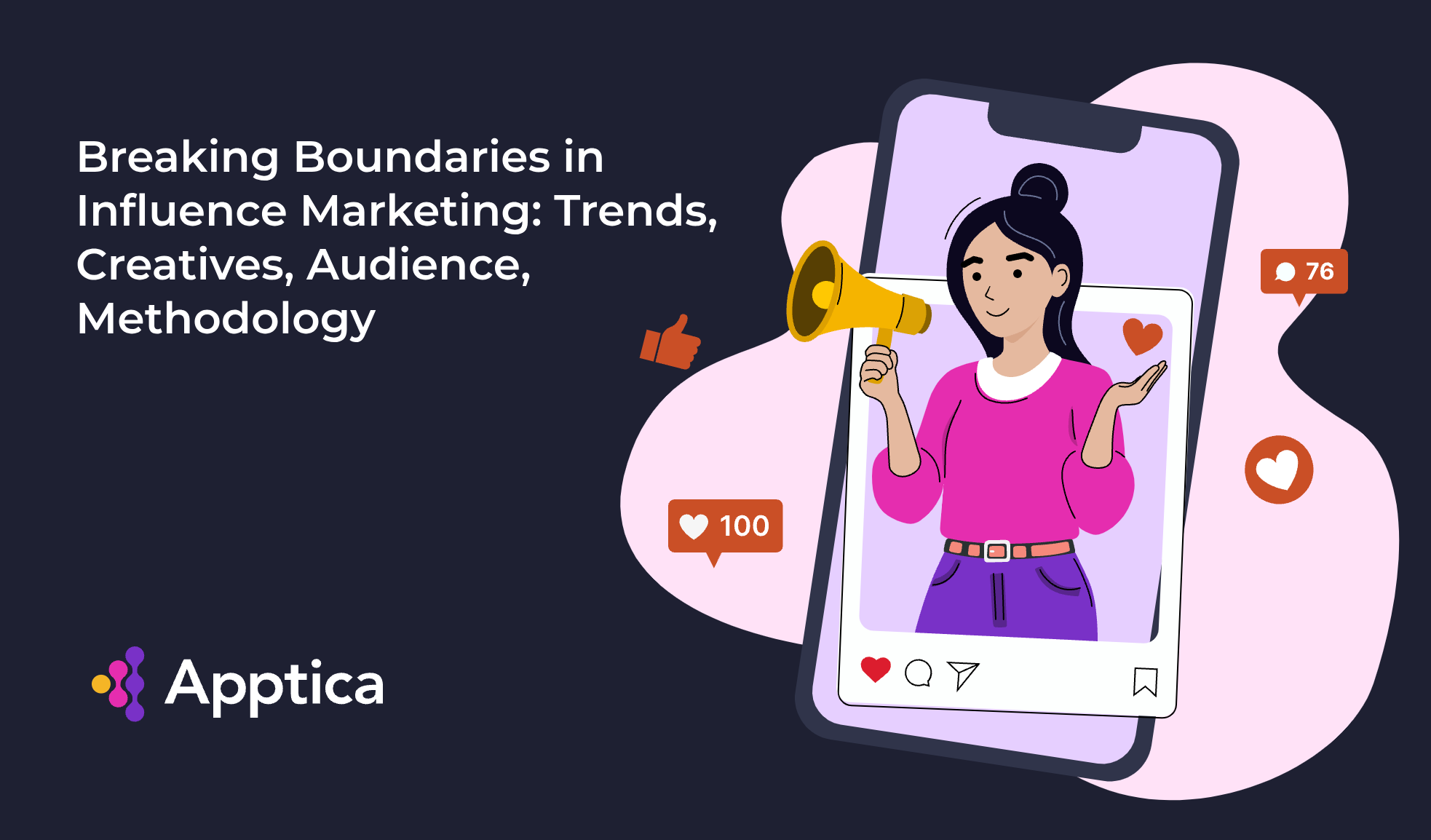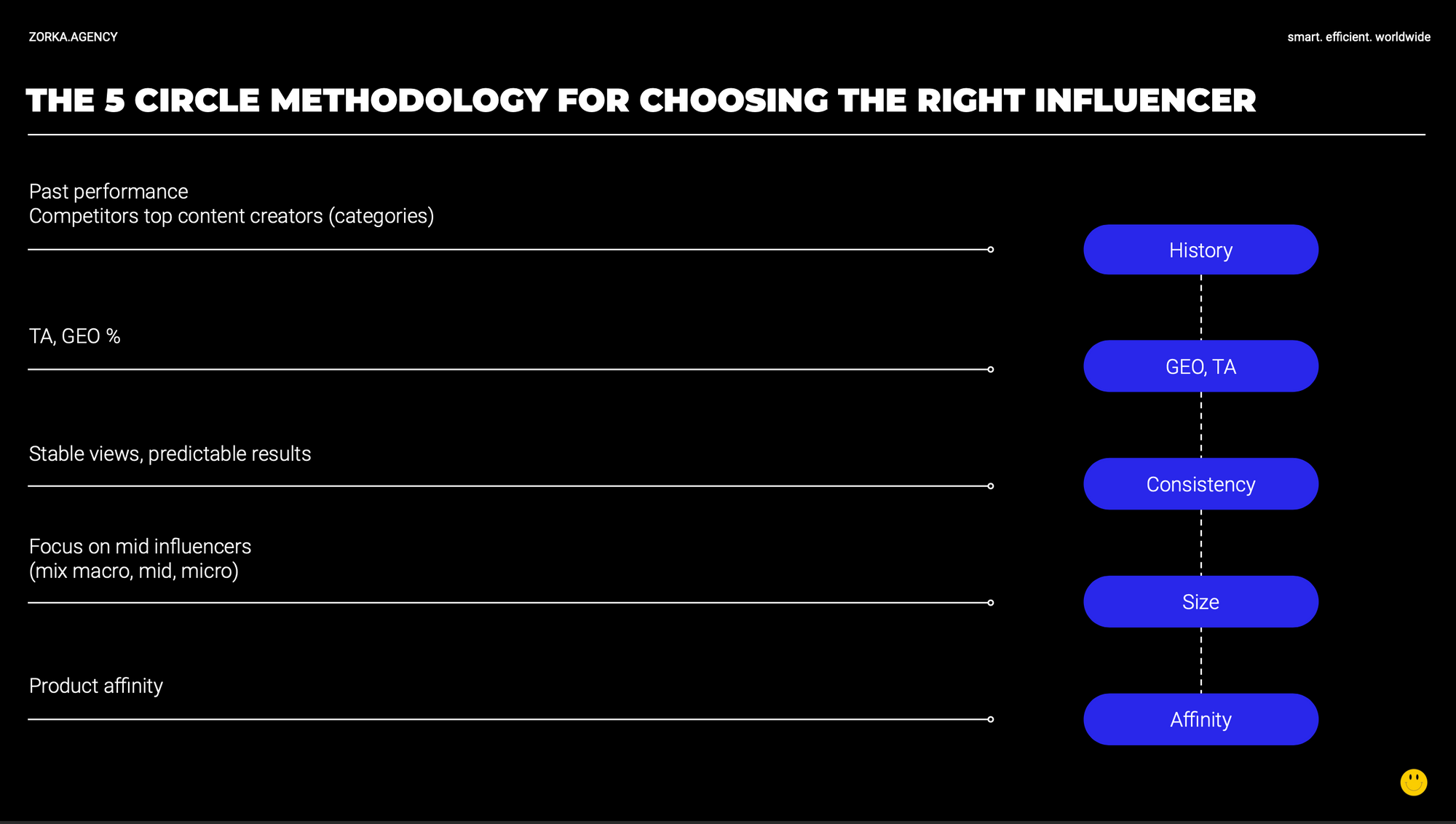Breaking Boundaries in Influence Marketing: Trends, Creatives, Audience, Methodology

By 2025, influence marketing is predicted to be worth $22 billion. The industry is bustling and growing: people perceive the recommendations of their peers better.
Half of all brands partnering with influencers run an eCommerce store. However, influence marketing is also a solid pick for mobile app ads and playable advertising, especially if the product is of high quality.
For every $1 spent, brands receive $4.12 in the long run. That’s an ROI of more than 400%! If you feel as inspired as we do, scroll down the article and see how influence marketing boosts app monetization and performance.
Influence Marketing Explained
Influence marketing is when brands collaborate with media stars. It’s like asking a popular friend to promote a product… only you’re not friends 🥲, so the friendship is to be bought.
Influencers stand apart from traditional celebrities, as the former gradually develop their audiences by investing time, effort, and money. Running digital ads with influencers requires more than just money, as they genuinely care about retaining the users. In order to please their followers, influencers might take extra time to explore the offer at hand and be picky overall.
Influencers and publishers are similar but not the same. Webmasters own a website, which is used for user acquisition and promotional purposes. Influencers, on the other hand, stick to the most popular social media platforms without owning them. At the same time, influencers engage in app promotion or any other marketing activity because they can — they have won over the hearts and minds of people.
Influence Marketing Pros & Cons
Influence marketing enjoys higher credibility than paid app promotion. An influencer is an ideal intermediary between the brand and the audience, understanding the business goals and being in the lead of ordinary people. Influence marketing is helpful in many cases.
- When dispelling ad blindness: people trust influencers, so it’s easier to persuade the audience to buy.
- When targeting a specific audience: opinion leaders have won the audience already. If you’d like to tap into it quickly, influence marketing is the right way to go.
- When seeking strategic growth: influence marketing helps to gradually develop a long-lasting brand loyalty.
- When looking for marketing allies: influencers don’t always work for money. Sometimes they’ll be happy with special offers, discounts, or free items for their followers or themselves.
- When looking for authentic and creative ads: influencers have their own vision and approaches. Not only your mobile app advertising can be refreshed, but you can start making native ads too.
- When dealing with SEO: an opinion leader shares your link and the people follow it organically. That’s a direct boost to your search engine ranking.
However, influence marketing is not a silver bullet and there are cases when you’re better off opting for other forms of mobile app advertising.
- When the budget is small and ROI must come quickly: influence marketing delivers fast results only when targeting broad with sweepstakes and special offers, which require money to set up.
- When a new product is launched: influence marketing won’t make it more recognizable on its own. Consider diversifying your investment and leveraging Facebook, TikTok, and Snapchat ads, as well as CPA marketing via Android advertising.
- When you detest content marketing: clients will think twice before buying from a brand with 3 posts on social networks and a 3-year outdated website. Think about social media posting planners, which help to organize social media publications and plan them out a few months in advance.
Choose the Audience
It all starts with understanding the audience. Different generations frequent various platforms, e.g., YouTube, Instagram, TikTok, Facebook, Twitter, LinkedIn, Telegram, and SnapChat.
Via: Slicktext
The most visible influencers utilize social media, but there are other channels available to deepen connections with the users, like emails, blogging, or direct messaging. Here’s the breakdown of the audience’s preferences when it comes to marketing channels for influencers, outside social media:
- Baby Boomers, Gen X, and older Millennials favor emails
- Younger Millennials (Gen Y) like blog posts the most
- Gen Z is into text messaging, blogs, and emails as the last resort
That’s why before signing up for a partnership with an influencer, it’s a good idea to look into extra channels they are using to communicate with the audience.
Find Your Influencer
The second step is to find the right influencer for mobile app advertising, based on your target audience. The most popular influencers are not always your best bet, since small stars ask for less money and enjoy greater audience engagement:
- Nano-influencers: 1,000–10,000 followers ($10–100 per integration)
- Micro-influencers: 10,000–50,000 ($100–500)
- Standard influencers: 50,000–500,000 ($500–5,000)
- Macro-influencers: 500,000–1,000,000 ($5,000–$10,000)
- Mega-influencers: 1,000,000+ ($10,000+)
Ultimately, the influencer evolves into a celebrity, asking $1,000,000+ for partnership. Smaller audience segments are more engaged, and the app ads for them appear more native. On the other hand, larger influencers treat their media activities as the main source of income, so the quality of content they create is also up to standard. Smaller influencers are more suited for direct sales, but bigger influencers offer better brand awareness.
The size of the influencer’s commission is determined by a range of factors, including:
- Social media platform popularity
- Reach of influence
- Audience engagement
- Industry popularity
- Content matching
- Demand on influencer
To find the influencer, you can search Instagram manually, using appropriate hashtags. Or you can do it in B2B fashion, and go to the influencer marketing agencies. You can also use tools like HypeAuditor to find the influencers in bulk, related to your keywords.
Check our podcast with Alexander Frolov, CEO & Co-Founder of HypeAuditor.
Kristina Nikeenko, Influencer Marketing Director at Zorka.Agency, shares the 5 circle methodology for choosing the right influencer.

Selecting the right KOL (Key Opinion Leader) for a reasonable price is crucial for a successful marketing campaign. To facilitate this process, I recommend the 5-circle methodology, adaptable to any product and vertical:
- Past performance / Competitor Research
If unsure about the platform or influencer type, start with competitor research to identify trends. A single sponsorship doesn't always signify a successful strategy, so look for ongoing patterns. - Target audience / GEO %
Ensure a significant portion of your target audience is among the influencer's viewers. Since English-speaking channels often attract a diverse audience, obtaining detailed statistics is vital. - Stable views lead to a predictable results
Once you identify a suitable influencer, propose a compensation model that reflects the consistency of their viewership numbers. If you observe fluctuating views, consider negotiating based on the most engaging content, adopting a CPM model, or agreeing on a viewer commitment with provisions for compensatory promotion in cases of underperformance. - Diversification
Don't put all your eggs in one basket. Mix influencers of various sizes and content types for a balanced strategy. Mid-range creators typically offer the best balance of experience and cost-effectiveness. Be cautious with very small or large influencers, as they may not deliver the desired content quality or ROAS. - Product affinity
The influencer’s content should reflect your product values, and their message delivery must align with your brand's voice. Deeply examine their content, including audience reactions in the comments and the execution of past sponsored content, to gauge whether their promotional style is scripted or uniquely personalized.
Check our podcast with Kristina to learn more to learn about common campaign mistakes in Influencer Marketing and how to avoid them.
Tiny Details for Huge Improvement
When working with the influencers, you gotta remember that they’re in not just for money. They have their own goals, which might interfere and collide with your expectations.
That’s why you need to specify your promotional goals exactly. Brand growth or improved recognition are all too broad targets. Dare to be as specific as to ask to increase the share of the Gen Z segment in your audience.
Verify the quality of the influencer’s audience. It’s not even about bots, fake users, or dead accounts — sometimes, your expectations about the actual audience of specific content might deceive you. A blogger with 500,000 people might be frequented by non-English speakers. If you launch some playable game ads in English, this can become a problem.
Triple the number of influencers to look for. Influencers, especially big ones, are infamous for communication hurdles. About 30% of all the requests might get answered, so you should prepare in advance for ⅔ of the prospects turning back on you.
Take your time in setting up the list with the tasks. Elaborate on every objective and don’t go into generalities. If the influencer is free to translate your request as they please, they will go for an easier way.
When it comes to creatives, it’s better to let the influencer take advantage of what they do best — generating content. In case you want to sound native, you should impose too many restrictions on how to deliver your ads. However, you can also ask them to take part in a plot story of yours to gain more followers. Or simply generate the creatives with them yourself, after asking permission.
Conclusion
Influence marketing has become a powerhouse in digital advertising, with a predicted worth of $22 billion by 2025. It's particularly effective for eCommerce, mobile app ads, and playable advertising, boasting an impressive ROI of $4.12 for every $1 spent. While it offers high credibility and targeted audience reach, it's not always a silver bullet, especially for small budgets or new product launches. Understanding audience preferences and selecting the right influencers based on audience size and engagement are critical for success. Despite its challenges, influence marketing remains a potent tool for brands aiming to connect authentically with their audiences and drive meaningful results.




